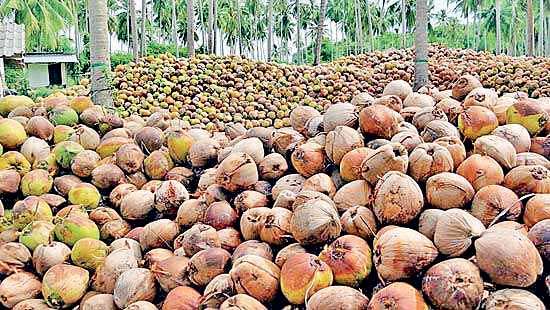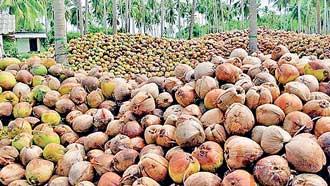Reply To:
Name - Reply Comment

 The newly inaugurated Ceylon Chamber of Coconut Industries (CCCI) has warned that the current coconut supply is insufficient to meet both the local and growing export demands, due to the significant challenges faced by the sector.
The newly inaugurated Ceylon Chamber of Coconut Industries (CCCI) has warned that the current coconut supply is insufficient to meet both the local and growing export demands, due to the significant challenges faced by the sector.
Coconuts are currently cultivated on approximately 1.1 million acres of land, producing about three billion coconuts annually. The CCCI’s first President Jayantha Samarakoon emphasised the need to boost the productivity of the existing coconut palms, replant the unproductive lands and expand cultivation in suitable areas.
“We need to increase the annual production from three billion to 4.5 billion coconuts within the next five years, to support domestic consumption and the export industry,” Samarakoon said.
Sri Lanka’s coconut yield remains unsatisfactory at 2,750 coconuts per acre, trailing behind India’s yield of more than 6,000 coconuts per acre. Increasing the yield is critical for Sri Lanka, especially given its limited arable land, while competitors like India, the Philippines and Indonesia can allocate more land for coconut cultivation.
Despite the existence of three dedicated government agencies—the Coconut Development Authority, Coconut Cultivation Board and Coconut Research Institute—there has been no significant breakthrough in the yield and production in the sector.
Samarakoon also announced that the chamber is seeking funds to launch a geographic information system (GIS) project to gather the necessary data for preparing a national plan for the industry.
“To implement a national plan, either by the government or through public-private partnerships, we need accurate geographic and demographic data on the coconut-growing sector. That is why we are seeking funding for a GIS initiative,” he added.
With the livelihoods of an estimated 800,000 coconut-growing families at stake, the chamber is seeking the support of the key government agencies to work together in this sector.
“The chamber and government should collaborate to provide the much-needed support for more than 800,000 coconut-growing families, most of whom own less than five acres, which account for 80 percent of the coconut land in Sri Lanka. This marks a new beginning for Sri Lanka’s coconut industry,” Samarakoon said.
Meanwhile, the CCCI’s first General Secretary and Ernst & Young Senior Partner Anil De Saram cautioned that the coconut prices could rise to Rs.270 per coconut, if no action is taken to reverse the current trend. (NF)